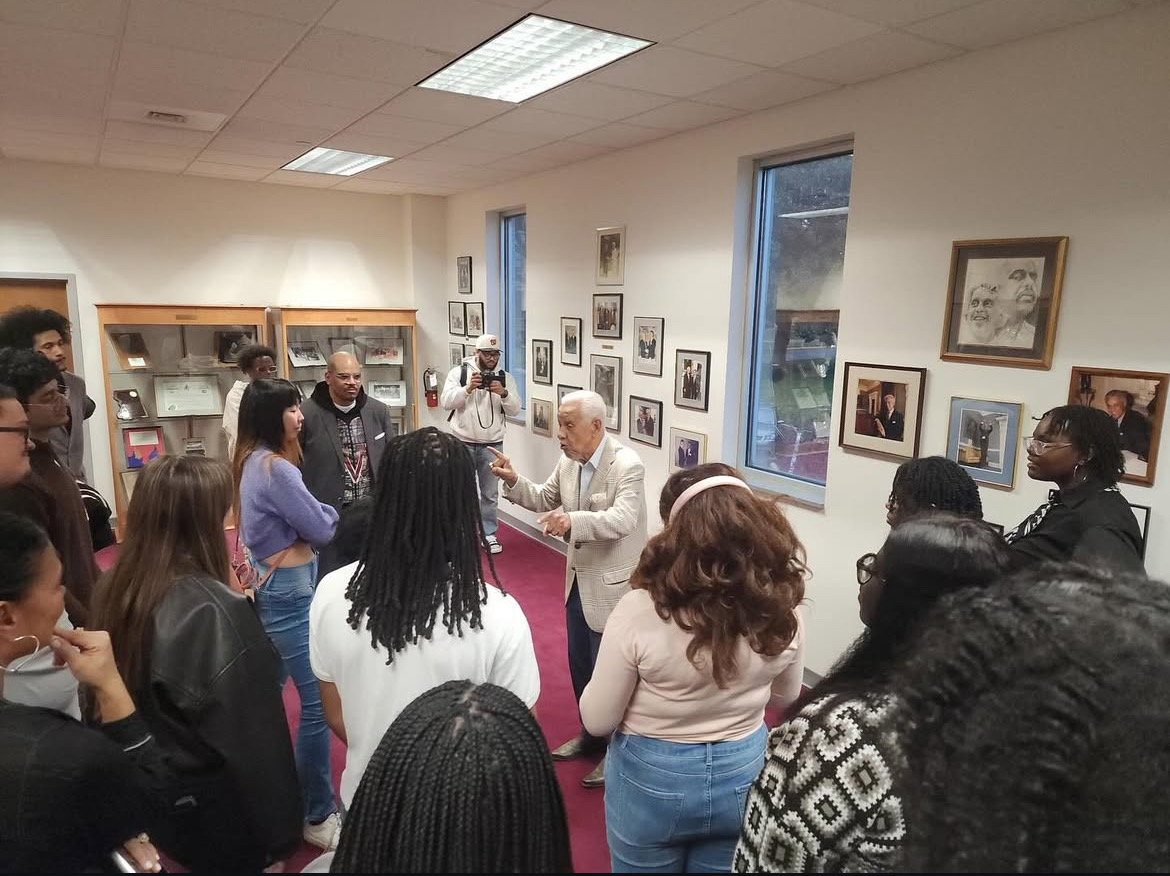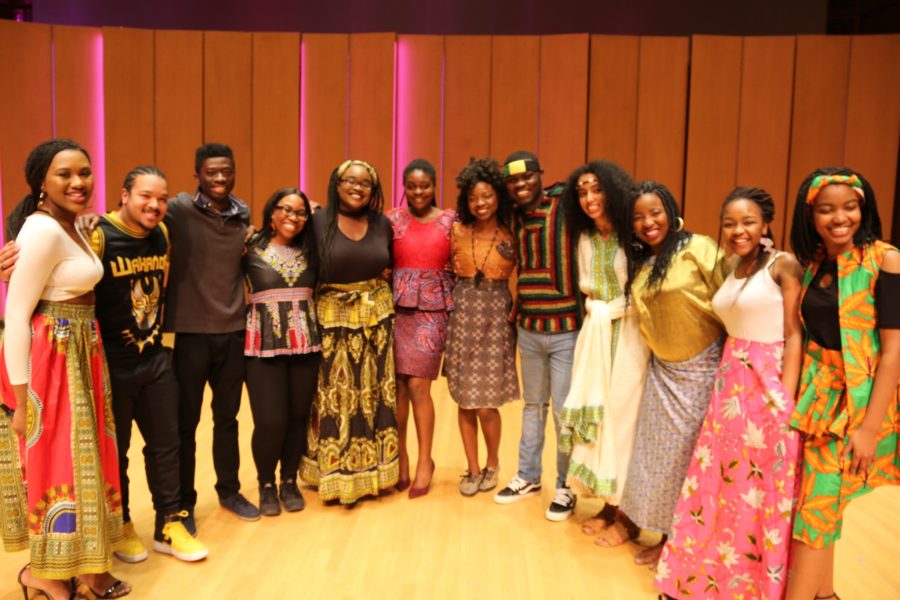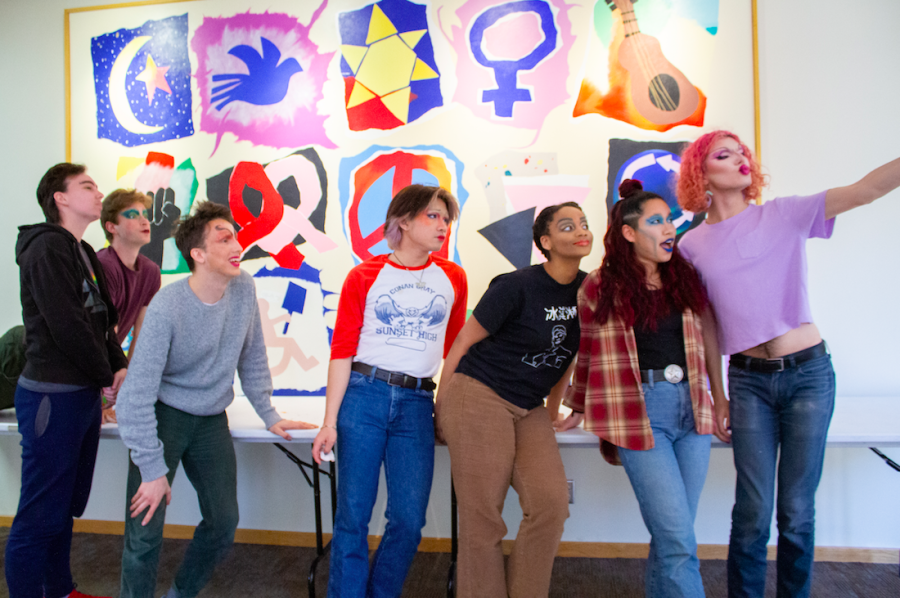On Feb. 26, students, staff and faculty gathered in the Library Athenaeum for a talk by American Studies Professor Chris Elias titled “‘The Most Foreign of All Foreigners’: Arab-Americans and the Creation of Whiteness.” The talk centered around the topic of Elias’ second book: the murder trial, imprisonment and subsequent execution of Joseph Arridy — an intellectually disabled son of Lebanese immigrants — in the late 1930s.
Director of American Studies Michael McNally gave an introduction, explaining how Elias had recently been promoted and offered a permanent tenure-track position after serving as a visiting professor for the past seven terms. Elias’ talk provided an opportunity for students and staff to learn about his current book project and also welcome him to the American Studies department.
Elias’ current project is writing his second book. His first book, “Gossip Men: J. Edgar Hoover, Joe McCarthy, Roy Cohn, and the Politics of Insinuation,” was published in 2021. McNally recommended the book and described how “Roy Cohn’s playbook” has a great amount of relation to modern political movements in power today.
He also expressed excitement for Elias’ upcoming book, emphasizing how it “celebrates the depth of what American Studies scholarship can be.”
After McNally’s introduction, Elias’ talk commenced. Elias first thanked the faculty and staff of the American Studies department as well as his family and friends, some of whom were in attendance. He also expressed gratitude to his students and the college for the opportunity to teach and be a part of the community at Carleton.
“The happiest I can be is in front of a classroom at Carleton,” Elias said.
Elias then outlined the major topics of his upcoming book. He described the case of Joe Arridy, who was arrested on murder charges in 1936 in Colorado and was known in the media as “The Happiest Man on Death Row.” Elias showed a picture of Arridy playing with toy trains in his jail cell and explained that Arridy’s happiness stemmed from the fact that jail was “the most stable environment he had ever lived in.”
Elias recounted how he first learned of the story from a Reddit post. He decided to take on the investigation of this case as a book project because, as with his other book, he “tried to find an event with deep meaning and a compelling story.”
Consistent with American Studies’ interdisciplinary nature and encompassment of many different topics, Elias displayed an infographic with all of the themes surrounding Arridy’s case, including race, immigration, sexuality, family and disability.
Elias noted that, in this particular talk, he was only going to discuss race and immigration, saying, “if I try to explain all of these themes in 45 minutes, it would sound like I’ve been taking meth for a month.”
Elias explained that the title of his talk comes from a quote that describes Syrians as “the most foreign of all foreigners.” He wanted to investigate how Syrians became American, and how, at least in some cases, Syrians became white.
Although Arridy was Lebanese, Elias drew on sources describing Syrians, as “Syrian-Lebanese”was a common term used to describe people from Lebanon. The term can be traced back to the Ottoman Empire, and Lebanon was thought of as a province of Syria, and people from Lebanon thought of themselves as Syrian and Lebanese.
During an economic downturn and civil war in Lebanon in the 1860s, many Syrian-Lebanese wanted to leave the country. But, as Elias explained, they had experienced a “taste of the good life,” and after hearing stories of the opulence of America from missionaries, many Syrian-Lebanese people chose to head towards America.
Arridy’s family were Christians from the Holy Valley of Lebanon. Arridy’s father, Henry, came to America through Ellis Island. Most Syrian immigrants in the 20th century went to major cities on the East Coast and in the Midwest, but Henry Arridy moved to Colorado, a hub for mining and steel.
Arridy is one of five children, but one of only three children to live to adulthood. His parents were first cousins, and it was theorized that in addition to Arridy having a mental disability, his mother and at least one of his siblings were intellectually disabled as well. His mother thus could not work and his father never had a very stable job.
Using Henry Arridy as an example, Elias contextualized the changing racial identity of Syrian immigrants in the United States.
“Syrians were the first group to sue for their whiteness and win,” Elias said.
Elias cited the case of Costa Najour, a Syrian man, who was denied citizenship on the basis that he was not white. When he sued for his citizenship, the judge ruled using racialized pseudoscience that Najour was in fact white and could become a citizen. Later, in 1915, a different judge ruled that legally, Syrians were considered white, but they still faced discrimination in social and occupational settings. Henry Arridy was legally considered “white with a darker complexion,” and his daughter Amelia’s race was labeled as “White/Syrian.”
Interestingly, when Joseph Arridy was arrested, his race was marked as Mexican. Elias believes that the inaccurate representation of Arridy’s race may be attributed to multiple factors, including Arridy’s possible unawareness of his race or incapability of expressing it. Additionally, the largest non-white community in Colorado at the time was Mexican; as a result, intake staff at the jail may have assumed Arridy’s race, especially given the fact that Arridy’s co-defendant was Mexican, to which Elias said that Arridy’s “criminality became more readable if he was Mexican.”
Arridy was eventually found guilty and executed for the murder of a 15-year-old girl. However, it is believed that Arridy did not actually commit the crime, and in 2011, Colorado Governor Bill Ritter gave Arridy a full posthumous pardon.
Elias’ talk ended with a question-and-answer session, where students and staff asked questions about naming practices of Syrian immigrants, the prevalence of Arabic-speaking populations in South America and media coverage of the case.











